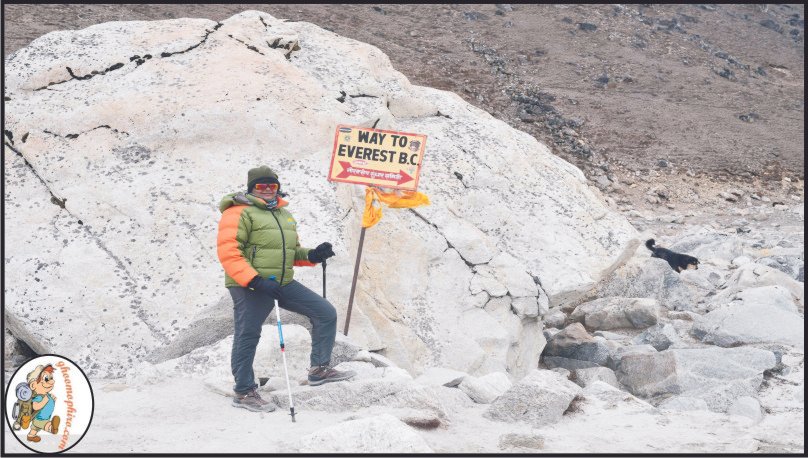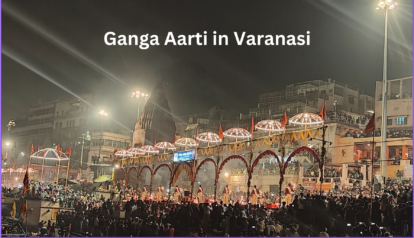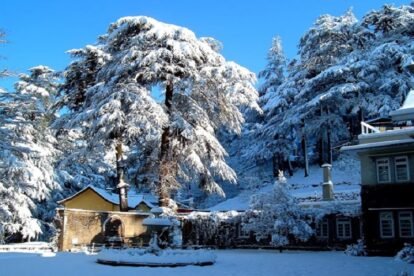Journey to Everest Base Camp via #ghoomophirolens
Posted on June 16, 2018 by Ghoomophiro

Thousands of people travel to Nepal every year for trekking to the base camp of the highest mountain in the world, Mt. Everest. Nepal is a worldwide famous spot for such adventure sports and hiking expeditions and as such, quite popular among adventure junkies. We are going to delve into this detailed guide for Everest based camp trek options.
The Everest Base Camp is known to be the most popular trekking destination, located amidst the peak of the highest mountain in the world. People come from all over the world to trek over here, every year and the usual trekker count reaches 40000.
After the successful expedition of Tenzing Norgay Sherpa and Sir Edmund Hillary in 1953, the route became everyone’s dream. Since it is one of the earliest opened treks for foreigners.
Guide to Everest Base Camp Trek
There are many sights of various peaks on the journey that you will encounter and these sites will mesmerize you. Apart from the main attraction – Mt. Everest (8848m), you will also see Mt Nuptse(7855m), Lobuche peak(6145m), Pokalde peak (5806m), Mt Lhotse (8516m), Mt. Lingterin (6679m), Mt. Amadablam (6856m), Mt. Pumori (7161m), Mt. Changaste (7550m), Mt. Kantega( 6685m), Mt.Kusum Khagaru (6367m), Mt. Twache peak (6367m), Mt. Cholaste (6335m), Mt.Kusum Khagaru (6367m), Mt.Kongde (6011m), Mt. Thamserku(6723m), Mt. Khumbila(5761m) , Honku south peak (6119m) , Island peak(6179m) and many more.
Located in Everest region, which is the second best trekking region in Nepal, this trek is filled with views of flora and fauna. The walk through this region among the beautiful green hills along with thick forests, glacier lakes, elegant rivers and graceful waterfalls is an incredible experience in itself.
This region also includes a UNESCO World Heritage site in its midst that is a home to several rare and endangered species. The Sagarmatha National park is open for viewing and you can come across some of its wildlife treasures on your way.
There is also a unique culture that thrives in this region of Everest. Known as the Sherpa community, most of the people living in this region have a culture and lifestyle resembling Tibetians. The open-mindedness and friendly approach of these people make them special.
All these details are for the sole purpose of informing you because it is better to have a clear idea about a place before visiting. This article will briefly explain all the details you need to know for having a wondrous journey to the Himalayas.
General Itinerary for Everest Base Camp
This includes the most common path undertaken which leads to the Everest Base camp. You can always customize the route but will have to willing to spend more time exploring the place. The usual itinerary is as below:
Day 1: From Kathmandu, Fly to Lukla (2804 mt.), then Trek to Phakding (2610 mt.)
Day 2: Trek from Phakding to Namche Bazar (3441 mt.)
Day 3: A break in Namche Bazar for Acclimatization
Day 4: Trek from Namche Bazar to Tengboche(3860 mt.)
Day 5: Begin Trek from Tengboche to Dingboche (4410 mt.)
Day 6: A break at Dingboche for Acclimatization
Day 7: Start Trek again from Dingboche to Lobuche (4910 mt.)
Day 8: Trek from Lobuche to Gorakshep (5153 mt.) to EBC and back to Gorakshep
Day 9: Start hiking to Kala Patthar and then trek to Pheriche (4210 mt.)
Day 12: Start Trekking from Namche Bazar to Lukla
Day 13: Fly back to Kathmandu
If you don’t wish to fly to Lukla, you can take an alternative route to go to Everest Base camp via Jiri.
Train your body for the Everest trek
Everest is not a child’s play and while you do not need to have an athlete’s body, it is still required that your body is fit enough to endure the terrain. If you wake up sore every morning, you will not be able to enjoy the long walks. Thus, it is better to train your body with some easy methods:
• Four to six weeks before the trek, start doing regular exercises.
• Follow the cardio exercise routine like swimming, cycling etc
• While doing these exercises, try carrying a backpack.
• Do push-ups, pull-ups squat to strengthen your muscles.
• Do not over-exercise. The aim is to increase lung capacity and stamina.
What to pack for Everest Trek
The trek requires several types of equipment and you can choose according to your needs. Below is a list of all needed equipment:
Start from Trekking gears, you must have these:
• Waterproof heavy-weight gloves.
• Running shoes or sandals which would work as running shoes around camp.
• Hiking boots and shoes and carry a spare set of laces
• Wool or fleece trousers or pants
• Down vest or jacket
• Warm and thick woollen socks for hiking
• Gaiters (optional)
Some other things you will need during the trek are:
• Shorts
• Underwear
• Thermal Tops
• Plastic bags
• Sun hat or scarf
• Waterproof shell jacket
• T-shirts
• Socks
• Cotton trousers
• Thermal gloves
• Thermal Bottoms
• Fleece jacket
• UV protection sunglasses
• Sleeping bag
• A daypack (35-40 litres/2500-3000 cubic inches)
• Water bottle
• Toiletries
• First aid kit
• Waterproof shell trousers
• Small wash towel
• Camping mattress
Some things to should know about the equipment
• It is not compulsory to buy all items on the list. Use your own judgment according to necessity.
• The footwear you choose must be comfortable and durable. Make sure that the boots are lightweight trekking boots and the fabric should be good and waterproof. Blisters and shoe bites can often ruin the fun.
• You can buy a pair of gaiters for your legs.
• It is better to dress in layers to be able to regulate body temperature according to will. Choose the outfit according to weather conditions.
• The clothes must be lightweight too and specially designed for trekking.
• A waterproof shell outerwear is a must.
• Your body, head and hands should be kept as warm as possible.
Required Permits for Everest Base Camp
While the Everest region is not restricted and does not require any prior permit, if you will be entering the Sagarmatha National park, then you must pay a little number of permit fees.
Health concerns
There are many risk concerns while trekking to such high altitude. Whether it is a minor or major injury caused by a careless step or a natural calamity, or a case of common cold and viral fever, there are many things that might go wrong.
Some of the most important issues that you must make yourself aware of before trekking to the Everest Base Camp are as follows:
Altitude Sickness
This is one of the most common sicknesses that happen when one ascends to higher altitudes. The symptoms appear within six to twenty-four hours. But it is not something to be taken casually because altitude sickness can be fatal and must be treated in time. One must stay alert for any symptoms.
Symptoms
The symptoms of altitude sickness are mentioned below:
• Dizziness
• Tiredness
• Headaches
• Nausea and Vomiting
• Upset stomach
• Loss of appetite
• Shortness of breath
• Difficulty sleeping
• Feeling unsteady
• Increased heart rate
An effective measure to recover from early AMS
In case you observe any of the above symptoms, follow the following guidelines immediately:
• Drink plenty of water to stay hydrated.
• Take medicines immediately
• Stop climbing and do not climb for further 48 hours
• Make sure you rest until you feel better
• Try descending to a lower altitude if possible
• Take external oxygen if necessary
• Do not smoke
• Do not exercise.
If despite all these, you do not see your condition improving within the next 48 hours, you will need to be immediately deported for medical support in the city.
Preventive Measures
Though there are no ways to make your body adapt to high altitude before the trek begins, there are some ways to avoid AMS which are:
• Start ascending slowly and gradually till you reach higher
• Drink plenty of water on the way to stay hydrated
• Avoid drinking, smoking or any tranquilizing medicine.
• Let your body rest properly.
• Eat high-calorie food as your body needs it.
Sunburn issues
Higher altitudes cause sunburn more easily and therefore, it is essential to carry an abundant amount of effective sunscreen lotion. Something with a strong SPF like SPF 80 is suggested and make sure to apply it daily in adequate amounts.
The sun’s wrath doesn’t end there and you will have to protect your eyes from the sun rays as well. Carry good polarized sunglasses.
Insurance
Insurance is very important while going on such a trek and remember not to start a trek without it. In case you fall prey to Altitude sickness or any natural calamity, you might have to be deported in a helicopter and Insurance covers such costs, but you will have to purchase it beforehand. The easiest way is to reach out to any Travel agent and ask them regarding the purchase of Health insurance. They will guide you through the process or you can research it on your own if you want. But this is one of the important things you must not forget.
Trekking options
There are plenty of options for trekking to Everest Base Camp such as:
• Porter/Guide Combo
• Small Group Tour with Guide with Porter
• Private Guide with no Porter
• Private Guide with Porter
• No Guide with Porter
• No Guide and No Porter
Hiring a guide and a porter
Though it isn’t compulsory for you to travel with a guide, it is recommended. Guides have good knowledge and more experience about trekking. They usually make the trek easier by guiding through navigations, suggesting good places to stay at and eat, and they can also help with negotiating price at various places. In case of emergencies, a guide is quite helpful but before hiring one makes sure to check their license.
A porter is just someone to carry your baggage so you can enjoy your journey more comfortable. In current times, Guide-porters are also available so it just depends on what you want to choose for yourself. Guide-porters help cut down additional expenses as these are experienced porters who are close to becoming a certified guide.
Best season for trekking
If you are trekking to Everest Base Camp, the months of March to May (Spring) and September to December (Autumn) are considered the best. The weather during these months is pleasant and you can make the most out of the trekking experience by enjoying the walks and weather. The rainfall is also limited or there is none at all which removes additional hassle. In the month of May, the flowers will be blooming in the rhododendron forest. The clear skies also help in making sure you get the best view of the Himalayan ranges.
Enjoy your Everest Trek!
The Everest Base Camp Trek is every trekker’s dream. So I hope this Trek guide helped you out in your plans. Just the thought of standing at the highest peak fills us with such excitement. And though the journey sounds so difficult, in reality, it is just not so. There are just so many things to enjoy and savour along the way that one almost forgets the weariness and forgets to pay attention to the tiredness of the body. But if you follow the tips and tricks mentioned in the guide, you will have a complete and a pleasant trip which will be unforgettable.










Excellent goods from you, man. I’ve understand your stuff previous to and you’re just
too fantastic. I actually like what you’ve acquired here,
certainly like what you’re saying and the way
in which you say it. You make it entertaining and you still take care of to keep it wise.
I can’t wait to read far more from you. This is actually
a tremendous site.